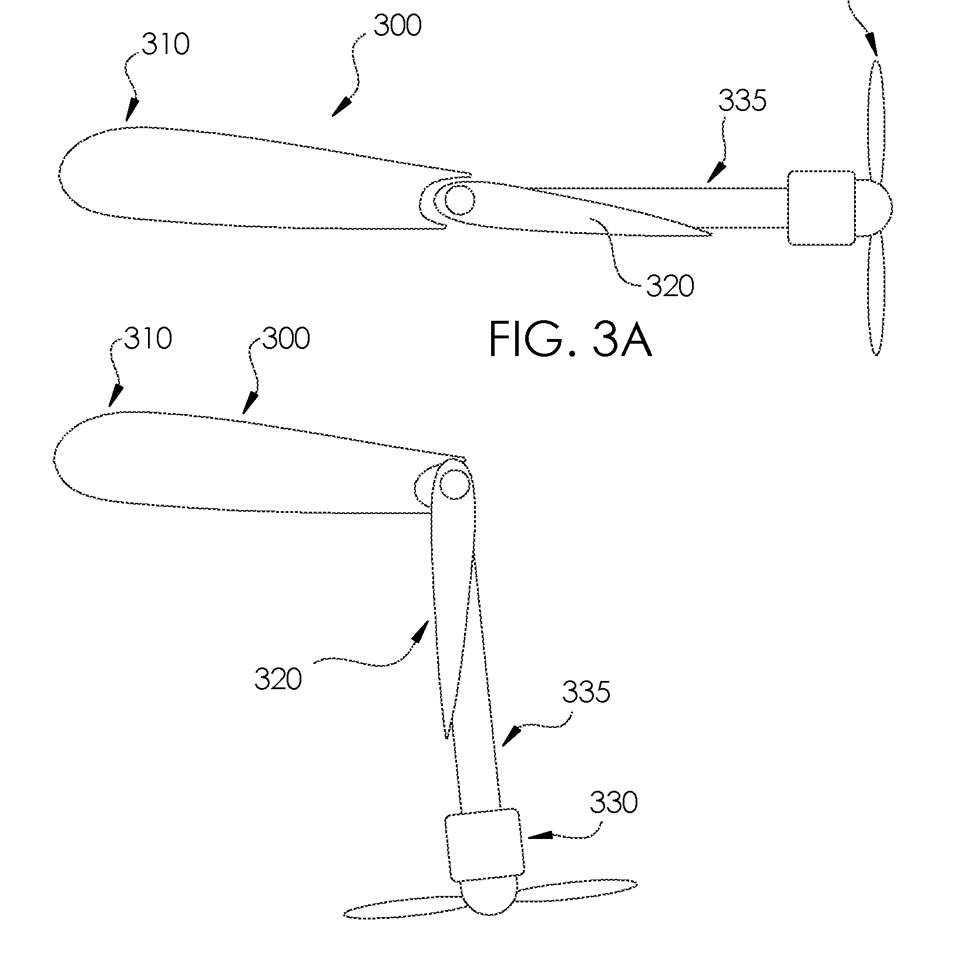NASA has contracted Virginia’s Advanced Air Company to design and build a prototype of a new type of transition-capable eVTOL drone – a tilt-wing concept that uses aerodynamic forces instead of actuators to tilt the wings and propulsion systems.
AAC Founder and CEO Bill Fredericks has spent time working at NASA’s Langley Research Center in Hampton, Virginia – and indeed, he worked on the early concept of these “aerodynamically actuated thrust vectoring devices” while he was there. Thus, while Fredericks is one of three named inventors on a patent filed back in 2016, NASA owns the IP and Fredericks will work on designing and building the prototype under license.
Thrust vectoring systems for drone-style VTOL aircraft are a dime a dozen at the moment. But all the designs I’ve seen share one thing in common; computers decide which way their propulsion systems are pointing, and some kind of actuator makes it happen.
Fredericks believes transitioning flight doesn’t need to be that complex. An aero-driven tilt-wing aircraft would have freely-tilting wings with propellers attached, weight-biased to have the wings and propellers point vertically upward at zero airspeed.
They’d take off and hover like a regular drone, and then as they began to move forward through the air, control surfaces like flaps on a plane wing would adjust lift, using both ambient air and air moving through the propellers to pivot the wings fully forward into cruise mode for efficient flight.

NASA
The patent leaves room for springs to push the wings back toward vertical, dampers to control the rate of rotation, and locks to keep the aircraft in cruise or hover orientation if necessary, among other things. By adjusting the center of mass, center of lift, the pivot point, the properties of any springs and dampers, and a number of other factors, AAC believes it’s possible to create an aircraft that’ll simply handle transition flight in a totally passive way, without needing complex calculations on the fly.
Why do this? Well, ditching the actuators removes a potential point of failure, as well as some weight and complexity. “Aero-activated tilt-wing configurations offer benefits over conventional configurations but also introduce significant design challenges,” says Fredericks in a press release. “Careful design of the center of mass location of the wing body, aerodynamic center of the wing body, and attachment points to the fuselage are critical for establishing a stable equilibrium point to ensure safe and reliable operation.”
We have no idea how this fascinating aircraft will be configured at this point – the patent sketches out a few different options, but details on the prototype under development are scant. We look forward to seeing it in flight.
Source: Advanced Aircraft Company
Source of Article